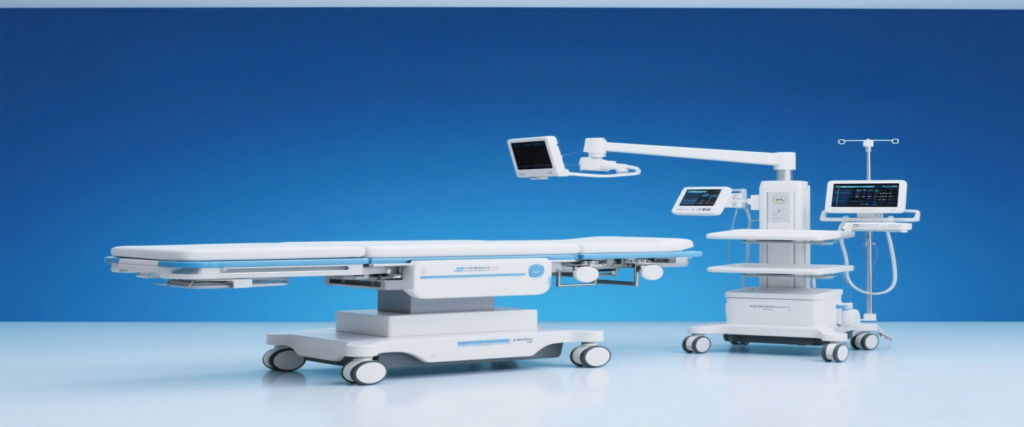In the rapid development of modern medical technology, the performance improvement of medical equipment is closely tied to material innovation. New energy aluminum alloys, with their lightweight, high-strength, corrosion-resistant, and biocompatible properties, are becoming core materials in medical device manufacturing, driving transformative breakthroughs in the healthcare industry.
Core Advantages of Aluminum Alloys in Medical Applications
1. Lightweight Design: Enhancing Portability and Intelligence
Key Feature: Aluminum alloys reduce equipment weight by >40% compared to traditional materials.
Applications:
Emergency stretchers made of new energy aluminum alloys improve rescue efficiency with lighter frames and faster response times.
Wearable health monitors use ultra-thin aluminum alloy casings for comfort and long-term monitoring.
2. High Strength & Precision: Critical for High-End Imaging Equipment
Technical Performance:
Aluminum alloys undergo advanced heat treatment to achieve high strength and dimensional accuracy.
Example: MRI magnet support frames made of aluminum alloys reduce vibration/noise and enhance imaging stability.
Thermal Management:
Aluminum alloys dissipate heat effectively, extending equipment lifespan during prolonged operation.
3. Corrosion Resistance: Ensuring Long-Term Reliability
Protection Mechanism:
A natural aluminum oxide layer resists corrosion from humidity, alcohol, and disinfectants.
Applications:
Hospital water/air systems using aluminum alloys require less maintenance and meet strict hygiene standards.
4. Biocompatibility: Enabling Implantable Medical Devices
Surface Engineering:
Aluminum alloys with bioactive coatings promote cell adhesion and reduce immune rejection.
Customization:
The plasticity of aluminum alloys allows complex shapes for personalized implants (e.g., cardiac stents, cochlear devices).
5. Sustainability: Supporting Green Healthcare
Recyclability:
Recycled aluminum alloys consume ~5% energy vs. primary production, reducing costs and environmental impact.
Closed-loop recycling systems enable reuse in medical equipment manufacturing.
Case Studies
Intelligent Wearable Monitors
Material: New energy aluminum alloy casings.
Benefits:
50% lighter than stainless steel, enabling 24/7 health tracking.
Smooth surface for easy disinfection, complying with medical hygiene protocols.
MRI Equipment Frameworks
Material: 7000-series aluminum alloys.
Results:
30% noise reduction during scans.
20% longer lifespan due to improved heat dissipation.
Future Trends
Material Innovation:
Nano-enhanced aluminum alloys for stronger, lighter implants.
3D-printed aluminum components for patient-specific surgical tools.
Sustainability Goals:
90% recycled aluminum usage in medical equipment by 2030.
Conclusion
New energy aluminum alloys are revolutionizing medical equipment through lightweight portability, corrosion resistance, biocompatibility, and sustainability. From emergency stretchers to MRI machines and implantable devices, these materials enhance performance while reducing environmental impact. As material science advances, aluminum alloys will continue to drive innovation in smart, precise, and patient-centric healthcare, propelling the medical industry toward a healthier future.


